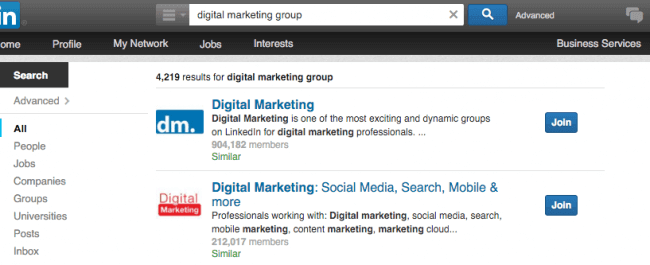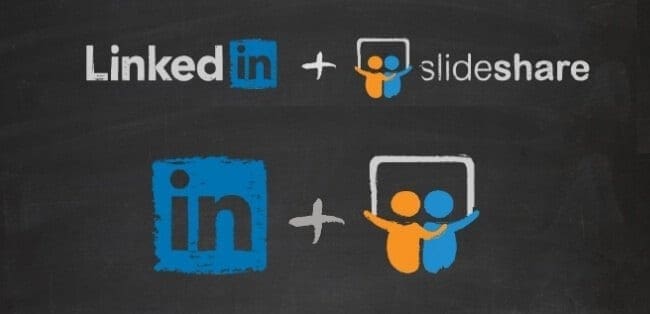With Microsoft’s recent acquisition of LinkedIn (discussed here), we felt it was about time to talk about this incredibly important, and in some ways underrated, social tool. LinkedIn has grown to become a platform where much business is won and conducted, as well as a place where talent is scoped out, doing away with some of the old, archaic interview processes.
If used in the right way, LinkedIn can be a powerful tool for increasing both you own individual image and your company’s image, as well as streamlining your brand across all of your employees pages; creating another resource where people can get a look and feel for your company.

LinkedIn Logo – Source: https://brand.linkedin.com/downloads
It is important that if you are on LinkedIn you are using it in the right way, otherwise an incomplete or lacklustre profile will negatively affect your image.
We look below at the importance of LinkedIn and how to use it efficiently in your B2B marketing.
For individuals:
One of LinkedIn’s greatest benefits for any individual is job hunting. Potential employers will often ask for your profile when you submit an application and often employees may check out your profile if you’re in a management position or involved in the hiring process. Having an incomplete profile is an instant turn off to anyone looking to find out more information about you.
The basics are ensuring you have a professional headshot photo; we’re always amazed at how many people treat LinkedIn like Facebook. Remember, LinkedIn is a professional business network, so keep that in mind when selecting your photo. The same goes for what content you share on your profile; keep it professional and remember to filter which information goes onto which social site. Make sure your profile is well fleshed out with you backstory; current and previous experience, volunteer experience, awards and education etc. Include photos and links of any projects you’ve worked on, and be sure to include ways that people can contact you. Just as businesses must build a brand, you too must ensure you build your own personal brand.
Never be afraid to reach out to people on LinkedIn, no matter how high up in the organisation. A lot of business and employment is won by cutting out the middle-man managers and approaching the CEO or MD directly. Remember, they’re still only human, no matter what their title is! However, bear in mind not everyone will want to be reached out to, so tread carefully, and always add a personal touch. Blanket messages that you have copied and pasted from one connection to another will do more damage than good.
For businesses:
LinkedIn Company Pages
Just as it’s important for your individual page to be complete, make sure your company page also looks professional and full of information. You only get a small summary box for your company page, so be sure it packs a punch. Whatever information that is included in this summary, it is useful to have similar information all employee pages as well to help bolster the image of your company by keeping it refreshed. LinkedIn results are often in Google’s search results, so it is important to make sure this is all presented in the right way.
LinkedIn is reported to have over 400 million member so be sure to use this to your advantage. HR managers and recruiters do a lot of their recruitment on this platform, and you too can use it to scope out the talent for your team or business. Using boolean searches such as “marketing manager” AND “google”, you can narrow down the millions of members specifically to look for hiring managers from Google. If you find what you’re looking for, you can easily reach them through LinkedIn’s messaging service.
LinkedIn Showcase Pages
Showcase pages are extensions of your company page and they allow you to advertise a particular product or brand. Each page you create, which you need a company page for, acts as a standalone page with its own set of followers and functions. As the summary section your company page is somewhat limited, using showcase pages is a great way to talk about your various products and services without crowding your main page, as well as building up dedicated followers around each section.
LinkedIn Groups, community and engagement:
Join any relevant groups that align with your interests and business sector; engaging with the professional community is a great way to make new contacts and potentially win business. Alongside this, posting well-thought out insights into these groups, and on your own timeline, will help you to establish yourself as a thought-leader in your chosen space. Engaging with the LinkedIn community will help you to stay on top of, and maybe even ahead of, the current market. You can see all the latest articles and news from your sector, and use this to your advantage.

Generate engagement using LinkedIn Groups – Source: https://www.linkedin.com/
Just as you can stay ahead of latest developments in the market, be sure to also market your own company updates. Let the professional community know what’s new with your company, and what direction you’re heading in. Again, be careful with how you approach this. Too much sales spam and you may find people disconnect from you. People don’t want to be sold to over their timelines; you can still market by keeping it professional and informative. LinkedIn has a useful content marketing tool for this called ‘SlideShare’, where you can share business documents, videos, infographics and presentations. You can also use LinkedIn for effective market research, knowing that the people you contact will be relevant to your sect

LinkedIn + SlideShare – Source: https://www.linkedin.com/pulse/how-linkedin-slideshare-can-boost-your-social-strategy-chelsea-french
LinkedIn vs Facebook vs Google+
The benefit of B2B marketing on LinkedIn is that you are aiming at a relevant and interested community. Facebook can be good for B2B marketing, as can Google+, but generally Facebook is more of a “friends and family” social network and Google+ isn’t as tailored to businesses as LinkedIn is. LinkedIn often gets overlooked as a marketing tool, perhaps because it’s stuck with the reputation of being a social network for recruitment, but if it’s used in the right way it can be highly effective.
LinkedIn advertising
LinkedIn does also offer similar advertising services to that of Google or Facebook, allowing you to create different types of ads, define bids for certain campaigns and also measure the performance of said campaigns with metrics like clicks. With over 400million users worldwide, Facebook and Google+ have larger audiences, but LinkedIn provides much greater targeting options tailored to B2B marketing. This includes targeting by job title, employer or interests.

HSBC’s targeted ad campaign. Credit: https://business.linkedin.com/marketing-solutions/resources/finance/hsbc-cs
Above is an example of LinkedIn’s target ad campaigns, showcasing HSBC. The company said that this campaign resulted in over 40,000 interactions with HSBC content and boosted update impressions by 1500%. LinkedIn have included a list of other success stories available here.
LinkedIn Pulse
LinkedIn has now also introduced “Pulse”, allowing users to post content, meaning they are bridging the gap between being a social network and a content platform. Your connections will get a notification when you publish a new post, and you can use this to effectively market yourself or a product, or, as mentioned above, establish yourself as a thought leader in your chosen space.
You can sign up to LinkedIn for free but there is the option to upgrade your account to Premium versions, which range from personal premium upgrades to business plans targeted at companies. Premium is not for everyone and you need to decide if it works for you and if you will get the full benefit from it.
It is a useful upgrade for recruiters or HR managers, who are able to see everyone who has viewed them (free users are restricted to the last five viewers), as well as have increased search options. You will also get a limited number of InMail messages per month depending on your upgrade type, which allows you to message any LinkedIn user without a previous connection.
Along these same lines, it is useful for anyone looking to build and conduct B2B relationships. If you put in the effort with the added Premium functions and features, Premium can more than pay for itself per month in terms of sales or new hires that you previously wouldn’t have had access to. However, for many users Premium may not be necessary. Research the added benefits it comes with and if you could utilise them to the fullest extent.
Conclusion
LinkedIn, when used in the right way, is an extremely powerful tool. If you aren’t already on there, make sure you establish a strong company page and encourage your employees to set up individual pages, to build their connections and share company updates and information. It’s worth doing an audit every month or so, to see whether you’re making the best use of LinkedIn. Keep it professional and streamlined, and keep it updated with the latest news; it could just end up winning you some business.






0 Comments